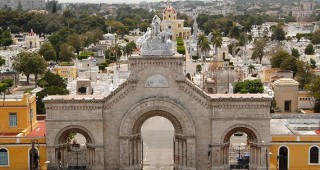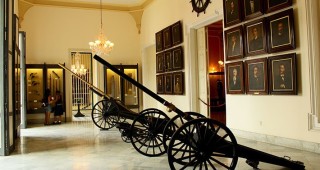‘You need to go to Guanabacoa’ is a popular phrase used in Cuba when someone is going through a rough patch. And although the area is known for its babalawos (divination experts, priests in the Yoruba religion) and Santeria practitioners, there is more to it.
The meaning of the word ‘Guanabacoa,’ of aboriginal origin, is still not clear and proposals made by philologists range from ‘area where there is plenty of water’ to ‘high palm grove.’ Also known as “el pueblo embrujado” (the haunted town), Guanabacoa was founded in 1554 in an attempt to “concentrate the indigenous population living in the area.” In 1762, during the British invasion of Havana, the mayor of the villa, José ‘Pepe’ Antonio Gómez Bollones led the Guanabacoa Militia and faced the invading forces (this is when machetes were first used as weapons). This is also the place where National Hero José Martí supposedly gave his first public speech in Cuba, and was also the birthplace of singer Rita Montaner, after whom the Casa de la Cultura in the municipality is named.
Guanabacoa is inland from Regla is, once a pre-colonial community and later a center for the slave trade. Today, it’s a lively town, just within the city boundaries, and is the heart of Havana’s Afro-Cuban religions: Regla de Ocha, Palo Monte and Abakuá. The town’s historical center was declared a National Monument in 1999, and has some of the most splendid churches in the region.
Guanabacoa is best reached from Havana by car, on the Vía Blanca highway then the Carretera Vieja, passing the Ermita de Potosí, on the land of the old cemetery. Built in 1644, making it one of the oldest churches in Cuba, it has a Mudéjar panelled ceiling and an original stone floor.




 Eclectic
Eclectic






